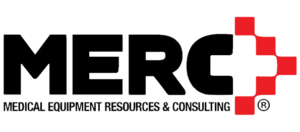Capital Strategy Insights: Reimagining The Process #007

02.17.2022
#007 Asset Value Contribution to Lifecycle – Part 6: The Replacement of Asset(s) in Positive Equity
It has been a crazy start to 2022 and I have gotten a little behind with the posts. Hopefully with this post we will be back on track for timelier content.
In Post #006 we reviewed some of the financial impacts of replacing an asset in negative equity, such as risks of reliability and downtime, unplanned emergency replacement, and funding the cost of decommissioning. As mentioned in earlier posts, analysis should be conducted for a determination of the equity status of the subject asset(s). This analysis may find negative equity, but in many cases the asset(s) are in positive equity. Clearly, this would be a good thing. What’s next when considering the replacement of subject assets in positive equity?
The first question is to know is “When does the unit go into negative equity?” The valuation and analysis that identified the equity position of the asset should determine the future point when the asset moves into negative equity.
The next question: “How much time is left in positive equity?” Hopefully sufficient time remains in positive equity to develop a replacement strategy.
Let’s suppose there are at least 12 months remaining of positive equity. The next question becomes “When is the optimal time for my organization to replace the asset?” There are a number of things to consider, some of which will be specific to your capital replacement process, and others will need to be identified to contribute to developing the strategy.
We will cover more details in future posts, but in general, your key considerations will fall into the following categories:
- Prioritization, which includes available funding
- Timing and scheduling, which optimizes your resources and leverage for procurement
- Process, to include internal evaluation (Clinical, Biomed, etc.) and Value Analysis, legal, internal and GPO contract reviews
- Contracting, including timing, terms, conditions, parts & service, scheduling, consumables, etc.
- Activation of the incoming asset(s)
- Liquidation of the outgoing asset(s)
- Decommissioning, which includes deinstallation, removal and administrative actions to occur at the end of life of asset(s)
Activation, liquidation, and decommissioning are closely linked within the scheduled sequence of events. They are separated because the actions and tasks needed to perform them are significantly different.
By knowing the asset is in positive equity and for how long puts the owner healthcare provider in a position to strategically plan for the replacement of the asset(s). The plan includes action items, tasks, events tied to schedules, objectives, and goals. You are then able to select the right asset(s) to replace, drive more value, avoid negative equity and associated costs, and transition smoothly into operating with the new assets. Each one of those outcomes contributes to providing the best patient care at the lowest possible costs.
In our next post, we’ll do a deeper dive on replacement prioritization using metrics, hopefully bringing rationalization of capital requests (which always seem to be greater than available funds) and the resulting “discussions” that occur in healthcare organizations. As always, feel free to comment at info@medicalequipmentconsultants.com.


